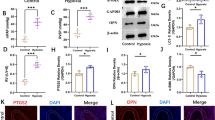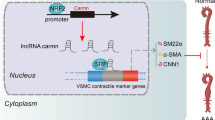Abstract
MicroRNA-144 is a cytoprotective miRNA. Our previous study showed that miR-144 provides potent acute cardioprotection in an ischemia/reperfusion injury model. This study was performed to further assess whether miR-144 improves post-MI remodeling in a non-reperfused myocardial infarction (MI) model. C57BL/6 mice were subjected to MI by permanent left anterior descending artery (LAD) ligation. miR-144 was delivered by intravenous injections of 8 mg/kg, 16 mg/kg, or 32 mg/kg at day 0, day 1, day 3, and then a similar dose given once every 3 days, until day 28 after MI. Cardiac function was evaluated using echocardiography. At the end of the study, heart function was also evaluated using a pressure volume catheter. The percentage of the length of the infarct scar on the left ventricle (LV) circumferential length was calculated for heart each section. The miR-144 KO mice showed a worse heart failure phenotype with ventricular dilation and impaired contractility after LAD ligation. Ischemia decreased miR-144 levels, and the miR-144 level was restored to baseline by administration of intravenous miR-144. Cy3-labeled miR-144 was localized to the infarct and border zone, and was taken up by cardiomyocytes and macrophages. In miR-144-treated groups, at 28 days MI size was significantly reduced, and cardiac function was improved [LV fractional shortening, end-systolic volume (µL), end-diastolic volume (µL), ejection fraction (%), dP/dt max (mmHg/s), dP/dt min (mmHg/s), Tau (ms)], compared with controls (p < 0.01). This beneficial effect was associated with reduced border zone fibrosis, inflammation and apoptosis, these effects were associated with significant changes in autophagy signaling. Intravenous miR-144 has potent effects on post-MI remodeling. These findings suggest that miR-144 has potential as a therapeutic agent after MI.









Similar content being viewed by others
References
Aoyagi T, Kusakari Y, Xiao CY, Inouye BT, Takahashi M, Scherrer-Crosbie M, Rosenzweig A, Hara K, Matsui T (2012) Cardiac mTOR protects the heart against ischemia–reperfusion injury. Am J Physiol Heart Circ Physiol 303:H75–H85. https://doi.org/10.1152/ajpheart.00241.2012
Bui AL, Horwich TB, Fonarow GC (2011) Epidemiology and risk profile of heart failure. Nat Rev Cardiol 8:30–41. https://doi.org/10.1038/nrcardio.2010.165
Buss SJ, Muenz S, Riffel JH, Malekar P, Hagenmueller M, Weiss CS, Bea F, Bekeredjian R, Schinke-Braun M, Izumo S, Katus HA, Hardt SE (2009) Beneficial effects of mammalian target of rapamycin inhibition on left ventricular remodeling after myocardial infarction. J Am Coll Cardiol 54:2435–2446. https://doi.org/10.1016/j.jacc.2009.08.031
Chen S, Li P, Li J, Wang Y, Du Y, Chen X, Zang W, Wang H, Chu H, Zhao G, Zhang G (2015) MiR-144 inhibits proliferation and induces apoptosis and autophagy in lung cancer cells by targeting TIGAR. Cell Physiol Biochem 35:997–1007. https://doi.org/10.1159/000369755
Chen W, Saxena A, Li N, Sun J, Gupta A, Lee DW, Tian Q, Dobaczewski M, Frangogiannis NG (2012) Endogenous IRAK-M attenuates postinfarction remodeling through effects on macrophages and fibroblasts. Arterioscler Thromb Vasc Biol 32:2598–2608. https://doi.org/10.1161/ATVBAHA.112.300310
Cleutjens JP, Kandala JC, Guarda E, Guntaka RV, Weber KT (1995) Regulation of collagen degradation in the rat myocardium after infarction. J Mol Cell Cardiol 27:1281–1292. https://doi.org/10.1016/S0022-2828(05)82390-9
Desmouliere A, Geinoz A, Gabbiani F, Gabbiani G (1993) Transforming growth factor-beta 1 induces alpha-smooth muscle actin expression in granulation tissue myofibroblasts and in quiescent and growing cultured fibroblasts. J Cell Biol 122:103–111
Dobaczewski M, Xia Y, Bujak M, Gonzalez-Quesada C, Frangogiannis NG (2010) CCR5 signaling suppresses inflammation and reduces adverse remodeling of the infarcted heart, mediating recruitment of regulatory T cells. Am J Pathol 176:2177–2187. https://doi.org/10.2353/ajpath.2010.090759
Dore LC, Amigo JD, Dos Santos CO, Zhang Z, Gai X, Tobias JW, Yu D, Klein AM, Dorman C, Wu W, Hardison RC, Paw BH, Weiss MJ (2008) A GATA-1-regulated microRNA locus essential for erythropoiesis. Proc Natl Acad Sci USA 105:3333–3338. https://doi.org/10.1073/pnas.0712312105
Frangogiannis NG (2014) The inflammatory response in myocardial injury, repair, and remodelling. Nat Rev Cardiol 11:255–265. https://doi.org/10.1038/nrcardio.2014.28
Fullerton JN, O’Brien AJ, Gilroy DW (2013) Pathways mediating resolution of inflammation: when enough is too much. J Pathol 231:8–20. https://doi.org/10.1002/path.4232
Li J, Cai S, Peng J, Friedberg MK, Redington AN (2016) Time dependent distribution of microRNA 144 after intravenous delivery. Microrna 5:36–49
Li J, Rohailla S, Gelber N, Rutka J, Sabah N, Gladstone RA, Wei C, Hu P, Kharbanda RK, Redington AN (2014) MicroRNA-144 is a circulating effector of remote ischemic preconditioning. Basic Res Cardiol 109:423. https://doi.org/10.1007/s00395-014-0423-z
Maekawa Y, Anzai T, Yoshikawa T, Asakura Y, Takahashi T, Ishikawa S, Mitamura H, Ogawa S (2002) Prognostic significance of peripheral monocytosis after reperfused acute myocardial infarction: a possible role for left ventricular remodeling. J Am Coll Cardiol 39:241–246
Maekawa Y, Anzai T, Yoshikawa T, Sugano Y, Mahara K, Kohno T, Takahashi T, Ogawa S (2004) Effect of granulocyte-macrophage colony-stimulating factor inducer on left ventricular remodeling after acute myocardial infarction. J Am Coll Cardiol 44:1510–1520. https://doi.org/10.1016/j.jacc.2004.05.083
Mauviel A (2005) Transforming growth factor-beta: a key mediator of fibrosis. Methods Mol Med 117:69–80. https://doi.org/10.1385/1-59259-940-0:069
Mukherjee R, Colbath GP, Justus CD, Bruce JA, Allen CM, Hewett KW, Saul JP, Gourdie RG, Spinale FG (2010) Spatiotemporal induction of matrix metalloproteinase-9 transcription after discrete myocardial injury. FASEB J 24:3819–3828. https://doi.org/10.1096/fj.10-155531
Pfeffer MA, Braunwald E (1990) Ventricular remodeling after myocardial infarction. Experimental observations and clinical implications. Circulation 81:1161–1172
Rohailla S, Clarizia N, Sourour M, Sourour W, Gelber N, Wei C, Li J, Redington AN (2014) Acute, delayed and chronic remote ischemic conditioning is associated with downregulation of mTOR and enhanced autophagy signaling. PLoS ONE 9:e111291. https://doi.org/10.1371/journal.pone.0111291
Rosenkranz S, Flesch M, Amann K, Haeuseler C, Kilter H, Seeland U, Schluter KD, Bohm M (2002) Alterations of beta-adrenergic signaling and cardiac hypertrophy in transgenic mice overexpressing TGF-beta(1). Am J Physiol Heart Circ Physiol 283:H1253–H1262. https://doi.org/10.1152/ajpheart.00578.2001
Rusten TE, Stenmark H (2010) p62, an autophagy hero or culprit? Nat Cell Biol 12:207–209. https://doi.org/10.1038/ncb0310-207
Shih H, Lee B, Lee RJ, Boyle AJ (2011) The aging heart and post-infarction left ventricular remodeling. J Am Coll Cardiol 57:9–17. https://doi.org/10.1016/j.jacc.2010.08.623
Squire IB, Evans J, Ng LL, Loftus IM, Thompson MM (2004) Plasma MMP-9 and MMP-2 following acute myocardial infarction in man: correlation with echocardiographic and neurohumoral parameters of left ventricular dysfunction. J Card Fail 10:328–333. https://doi.org/10.1016/j.cardfail.2003.11.003
Sun T, Dong YH, Du W, Shi CY, Wang K, Tariq MA, Wang JX, Li PF (2017) The role of microRNAs in myocardial infarction: from molecular mechanism to clinical application. Int J Mol Sci. https://doi.org/10.3390/ijms18040745
Sutton MG, Sharpe N (2000) Left ventricular remodeling after myocardial infarction: pathophysiology and therapy. Circulation 101:2981–2988
Tao ZY, Cavasin MA, Yang F, Liu YH, Yang XP (2004) Temporal changes in matrix metalloproteinase expression and inflammatory response associated with cardiac rupture after myocardial infarction in mice. Life Sci 74:1561–1572. https://doi.org/10.1016/j.lfs.2003.09.042
van Amerongen MJ, Harmsen MC, van Rooijen N, Petersen AH, van Luyn MJ (2007) Macrophage depletion impairs wound healing and increases left ventricular remodeling after myocardial injury in mice. Am J Pathol 170:818–829. https://doi.org/10.2353/ajpath.2007.060547
Velagaleti RS, Pencina MJ, Murabito JM, Wang TJ, Parikh NI, D’Agostino RB, Levy D, Kannel WB, Vasan RS (2008) Long-term trends in the incidence of heart failure after myocardial infarction. Circulation 118:2057–2062. https://doi.org/10.1161/CIRCULATIONAHA.108.784215
Wei M, Xin P, Li S, Tao J, Li Y, Li J, Liu M, Zhu W, Redington AN (2011) Repeated remote ischemic postconditioning protects against adverse left ventricular remodeling and improves survival in a rat model of myocardial infarction. Circ Res 108:1220–1225. https://doi.org/10.1161/CIRCRESAHA.110.236190
White HD, Norris RM, Brown MA, Brandt PW, Whitlock RM, Wild CJ (1987) Left ventricular end-systolic volume as the major determinant of survival after recovery from myocardial infarction. Circulation 76:44–51
Yan X, Anzai A, Katsumata Y, Matsuhashi T, Ito K, Endo J, Yamamoto T, Takeshima A, Shinmura K, Shen W, Fukuda K, Sano M (2013) Temporal dynamics of cardiac immune cell accumulation following acute myocardial infarction. J Mol Cell Cardiol 62:24–35. https://doi.org/10.1016/j.yjmcc.2013.04.023
Yu D, dos Santos CO, Zhao G, Jiang J, Amigo JD, Khandros E, Dore LC, Yao Y, D’Souza J, Zhang Z, Ghaffari S, Choi J, Friend S, Tong W, Orange JS, Paw BH, Weiss MJ (2010) miR-451 protects against erythroid oxidant stress by repressing 14-3-3zeta. Genes Dev 24:1620–1633. https://doi.org/10.1101/gad.1942110
Zhao S, Wu H, Xia W, Chen X, Zhu S, Zhang S, Shao Y, Ma W, Yang D, Zhang J (2014) Periostin expression is upregulated and associated with myocardial fibrosis in human failing hearts. J Cardiol 63:373–378. https://doi.org/10.1016/j.jjcc.2013.09.013
Acknowledgements
This study was supported by a grant from the Canadian Institute of Health Research, Grant number: MOP-133469 (A. Redington).
Author information
Authors and Affiliations
Corresponding author
Ethics declarations
Conflict of interest
None of the authors have any conflict of interests to report.
Electronic supplementary material
Below is the link to the electronic supplementary material.
Rights and permissions
About this article
Cite this article
Li, J., Cai, S.X., He, Q. et al. Intravenous miR-144 reduces left ventricular remodeling after myocardial infarction. Basic Res Cardiol 113, 36 (2018). https://doi.org/10.1007/s00395-018-0694-x
Received:
Accepted:
Published:
DOI: https://doi.org/10.1007/s00395-018-0694-x




